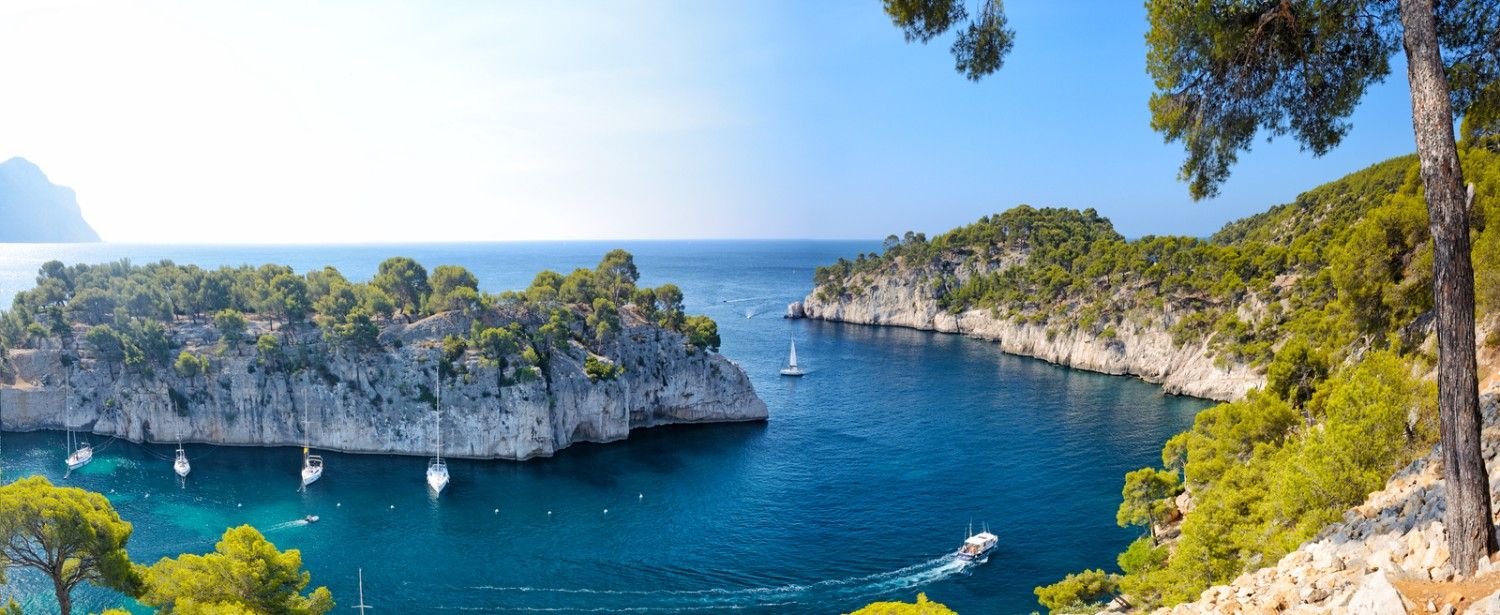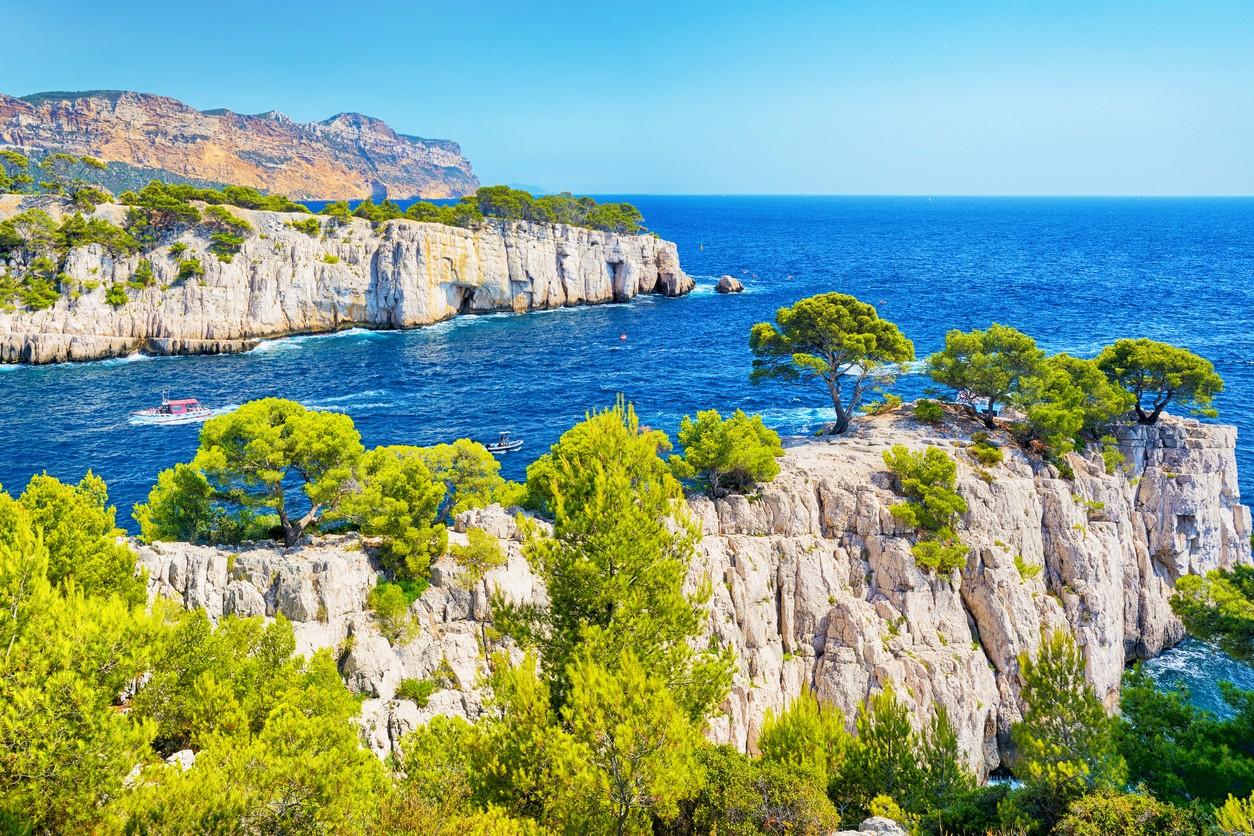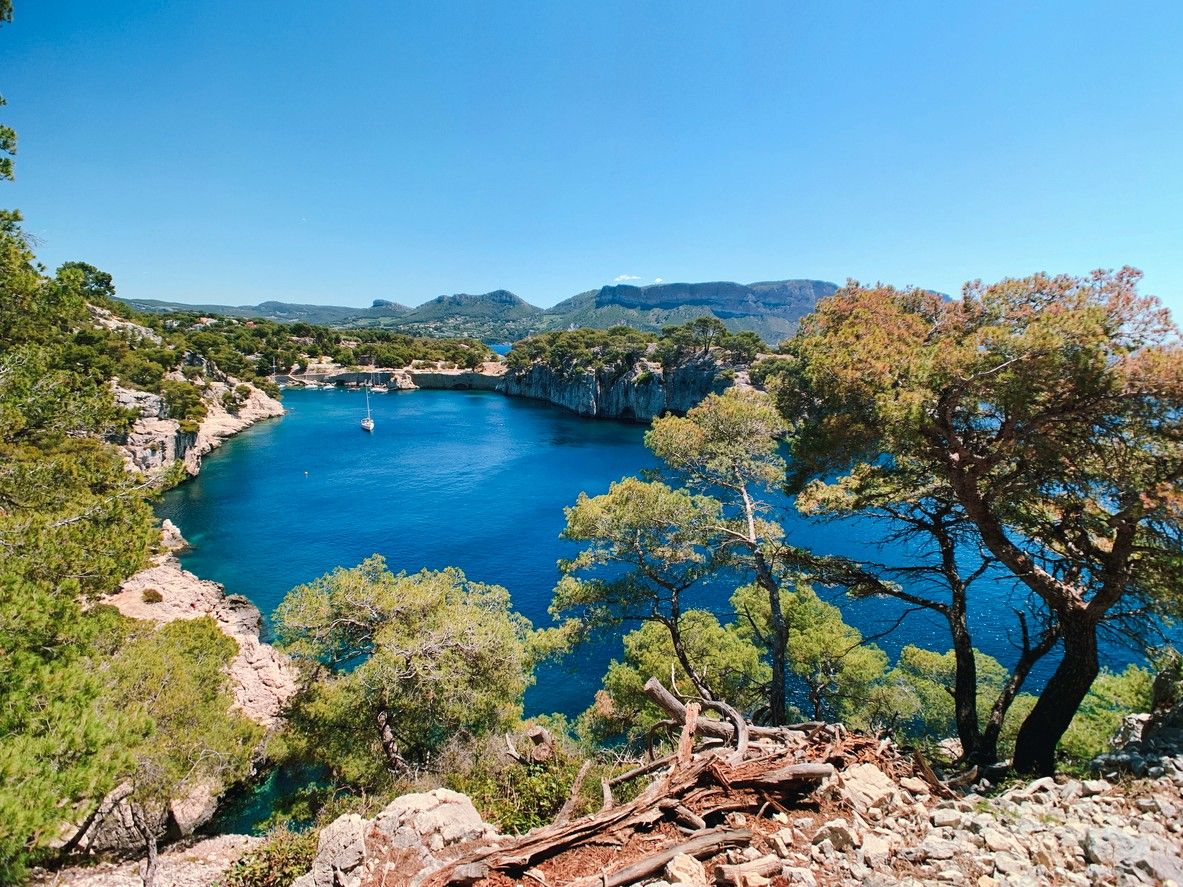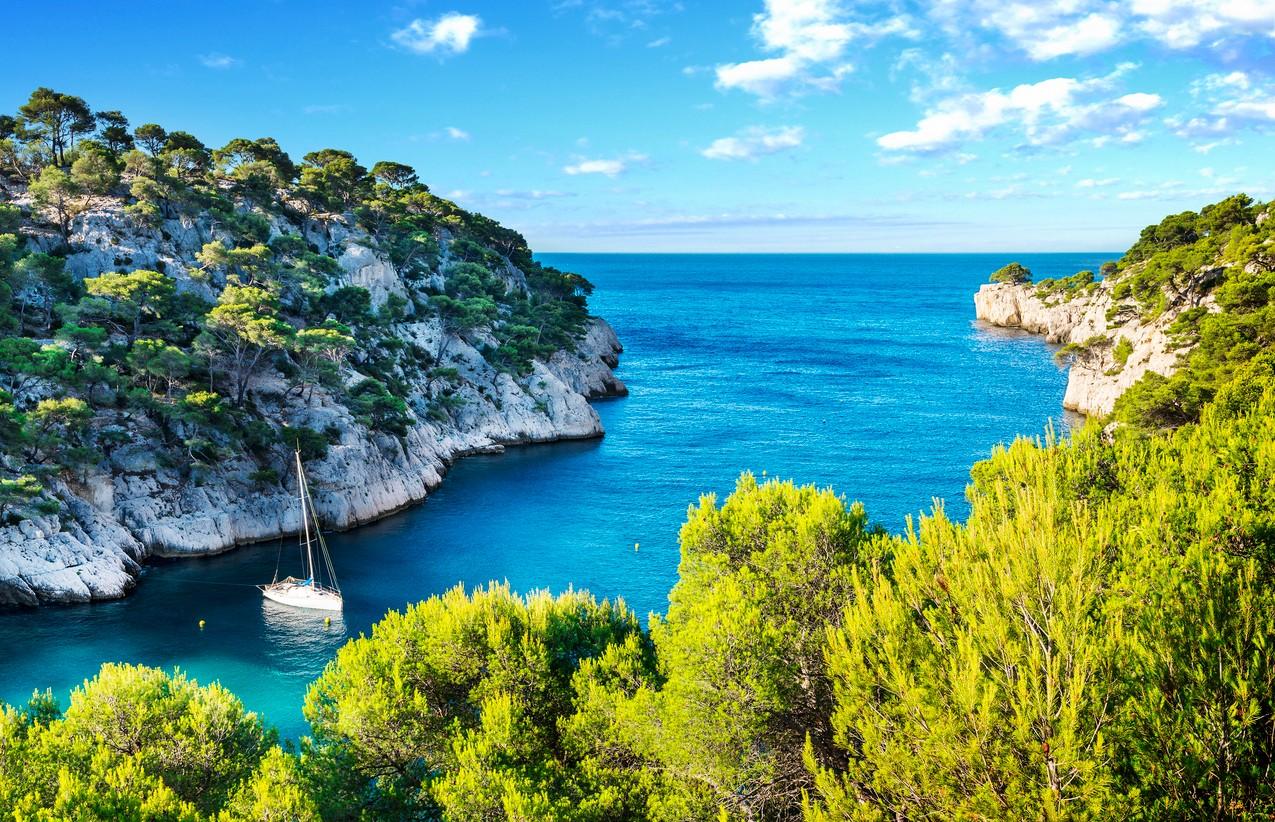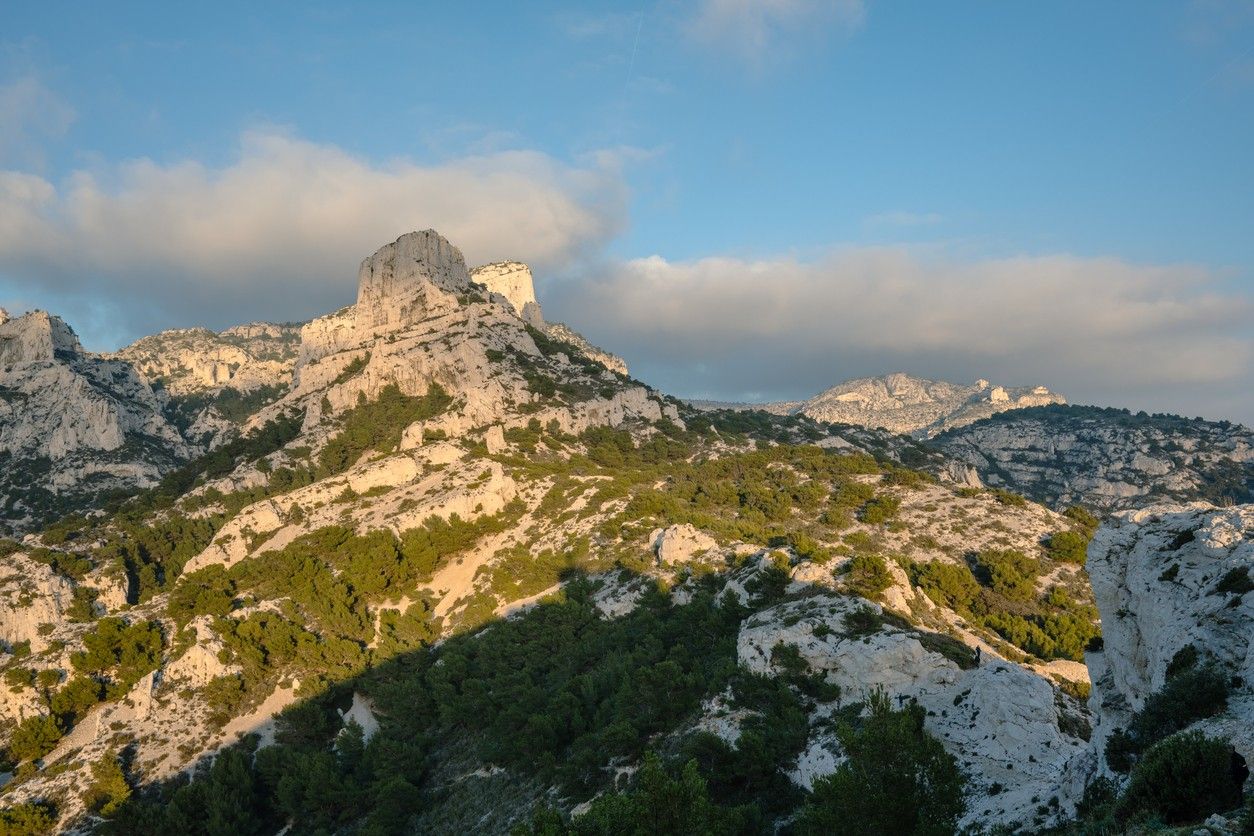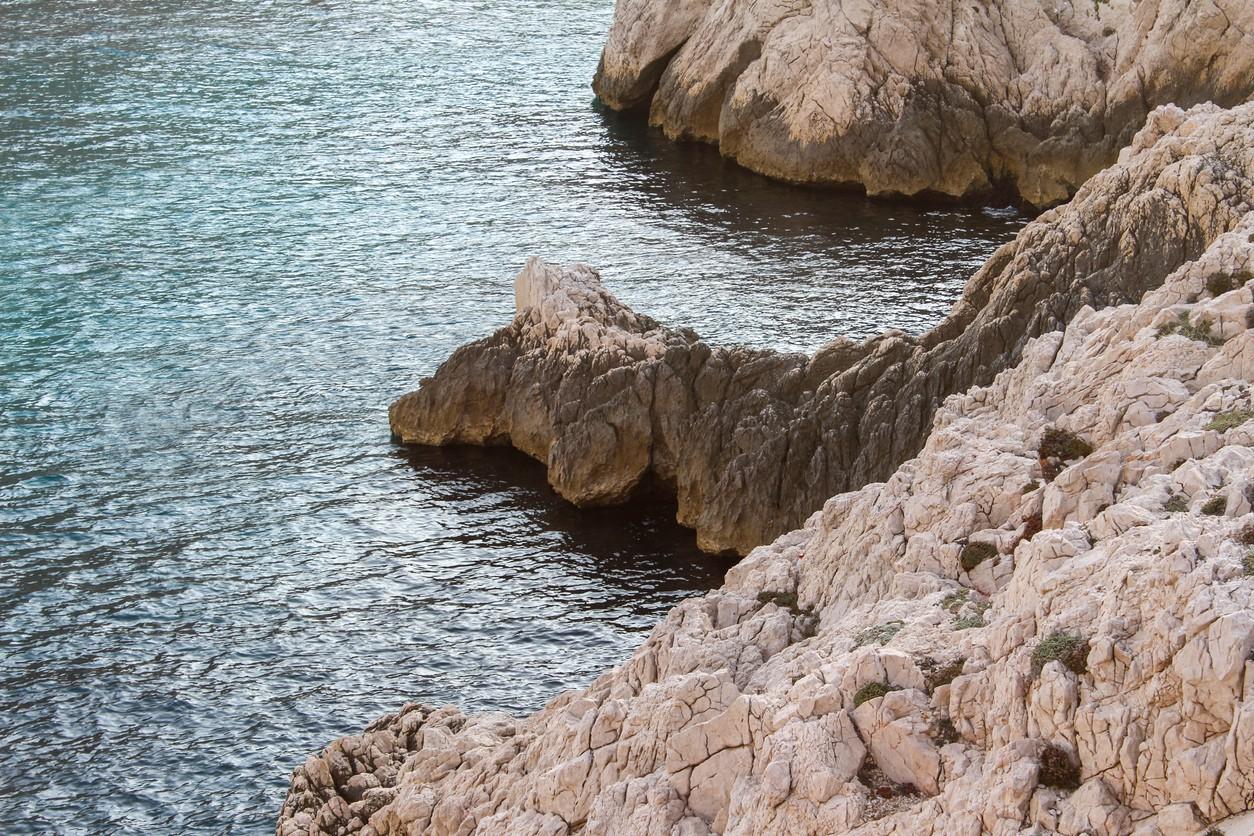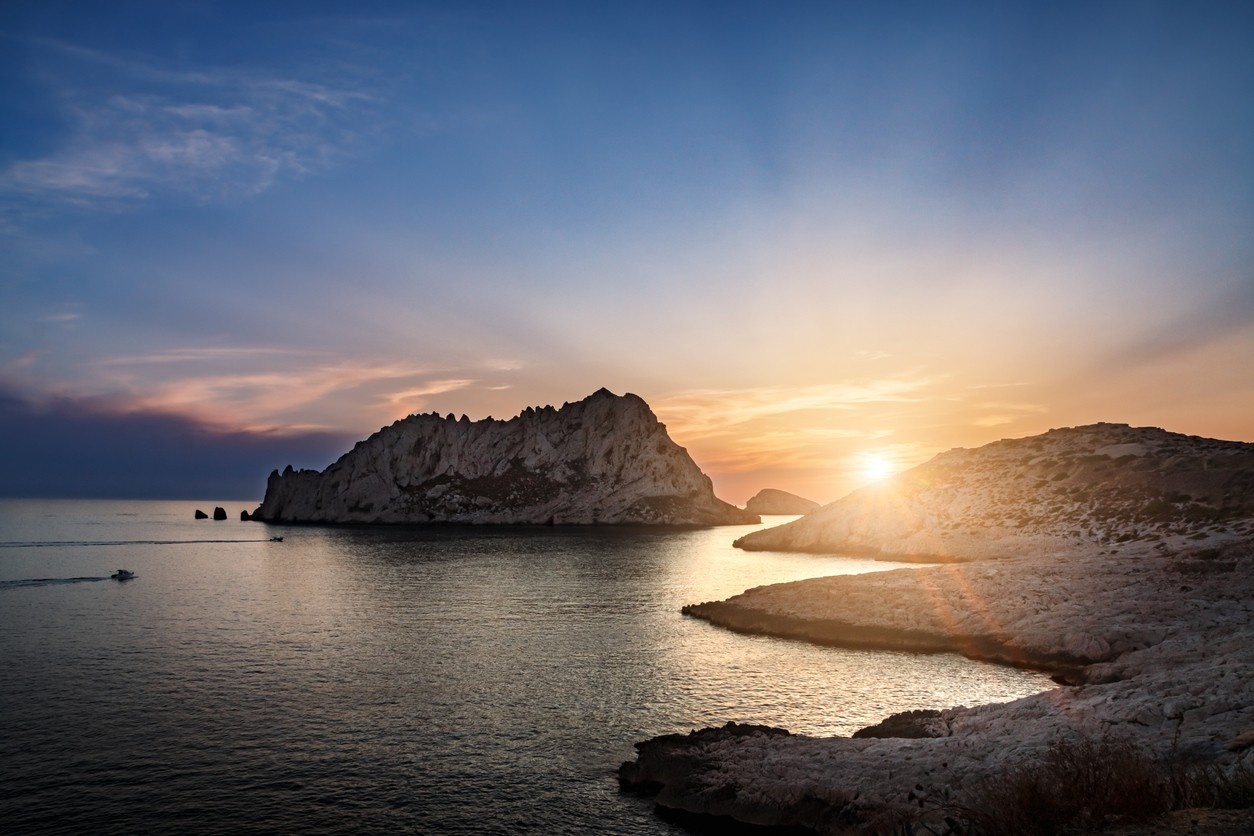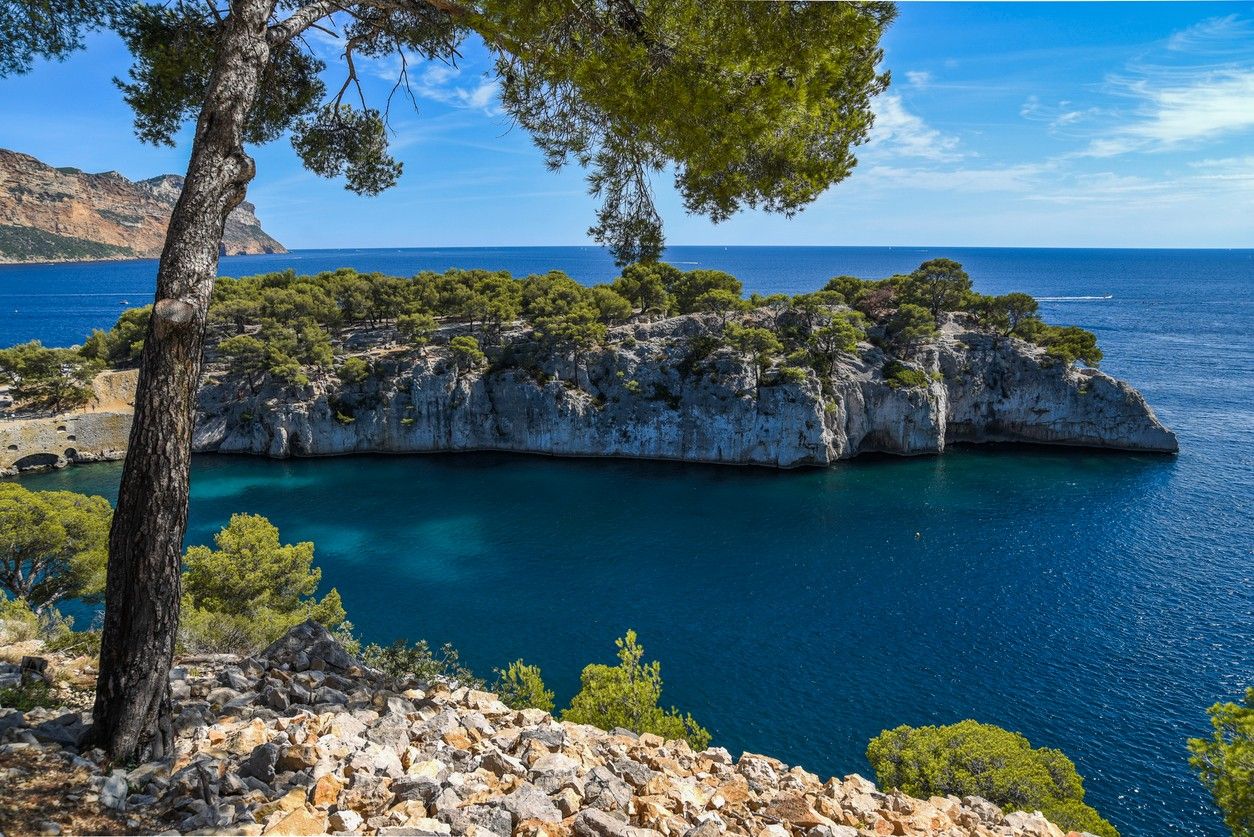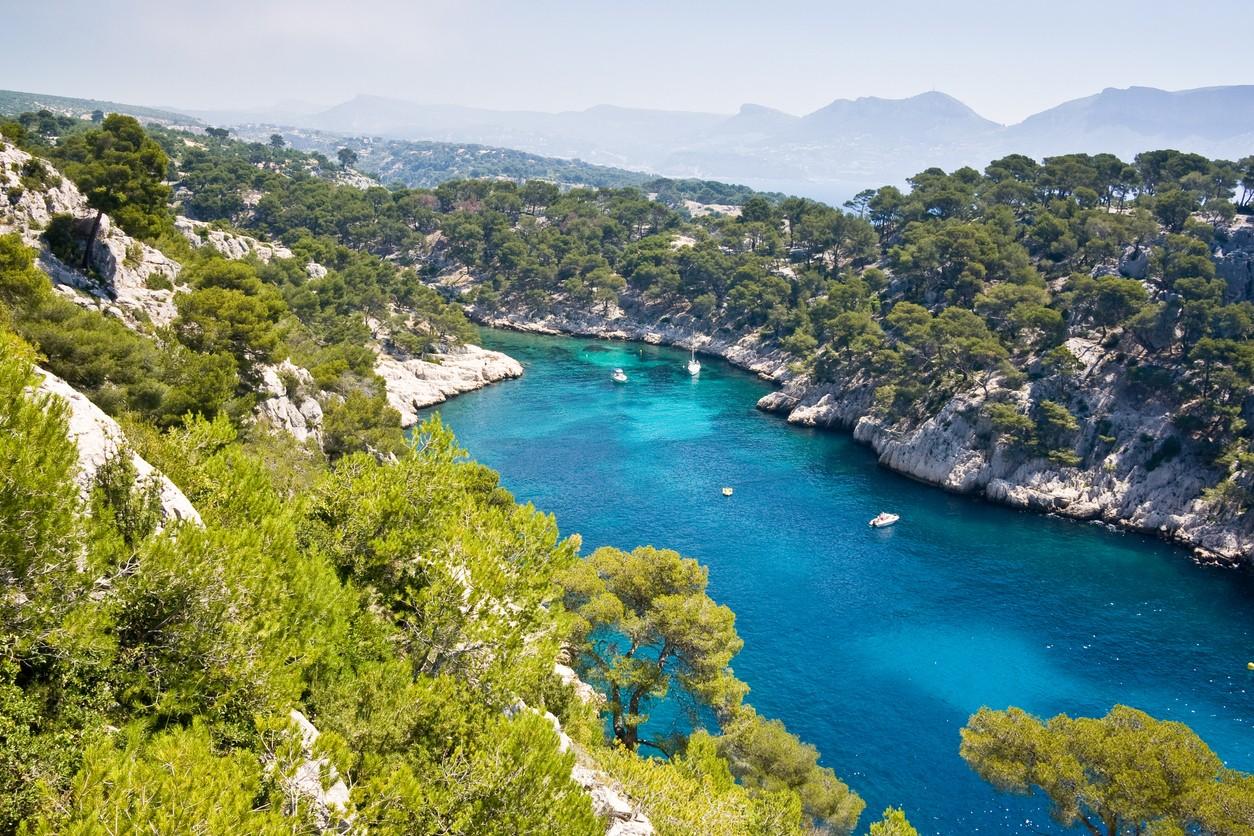Nestled along the stunning French Mediterranean coast, Calanques National Park offers a unique and awe-inspiring natural playground. This protected area, spanning over 520 square kilometres, encompasses a rugged terrain of steep limestone cliffs, hidden coves, and turquoise waters. Whether you're an avid hiker, a beach enthusiast, or simply seeking a serene escape from the hustle and bustle of city life, Calanques National Park has something to captivate every visitor.
Exploring the Calanques — A Hiker's Paradise
The Calanques National Park is a true hiker's paradise, offering a diverse range of trails that cater to all skill levels. From gentle strolls to multi-day treks, the park's extensive network of well-marked trails provides ample opportunities to explore stunning landscapes and immerse oneself in nature's grandeur.
Popular Day Hikes
- Calanque de Sormiou (Distance & Duration: 6 km round trip / 3 hours) — This moderately challenging hike leads to the picturesque Calanque de Sormiou, a breathtaking cove surrounded by towering limestone cliffs. The trailhead is located near the village of Sormiou, just a short drive from Marseille.
- Calanque d'En-Vau (Distance & Duration: 12 km round trip / 6 hours) — Considered one of the park's most challenging day hikes, the Calanque d'En-Vau trail takes hikers through a series of stunning Calanques before reaching the magnificent En-Vau cove. The trailhead is near the village of Callelongue, about 30 minutes from Marseille.
Multi-Day Treks
Traversée Marseille-Cassis (Distance & Duration: 35 km / 2-3 days) — This epic multi-day trek spans the entire length of the park, starting in Marseille and ending in the charming town of Cassis. Hikers can choose to complete the trek in one go or break it up into multiple days, camping at designated sites along the way.
Shorter Walks
Calanque de Port-Miou (Distance & Duration: 4 km round trip / 2 hours) — For those seeking a more stroll, the Calanque de Port-Miou offers a scenic 2-hour hike along an old military road, providing stunning views of the Calanque and the historic Fort de l'Éguillette.
Coastal Allure — Beaches and Hidden Coves
Calanques National Park is not only a hiker's paradise but also a haven for beach lovers, boasting a diverse collection of stunning beaches and secluded coves that cater to every preference.
Popular Beaches
Plage des Catalans — Located in the heart of Marseille, this bustling beach is known for its golden sands, clear waters, and proximity to restaurants, bars, and other amenities. It's a popular spot among locals and visitors alike but can get quite crowded during peak season.
Plage du Prado — This family-friendly beach in Marseille offers a wide sandy expanse, plenty of amenities, and facilities for beach sports and activities. It's a convenient option for those visiting the area with children or seeking a more accessible beach experience.
Hidden Coves
Calanque de Sugiton (Distance from trailhead: 3 km / 45-minute hike) — This stunning cove, accessible only by foot or boat, is a true hidden gem. Surrounded by towering cliffs, it offers a serene and secluded experience for those willing to tackle the challenging hike from the trailhead near the village of Callelongue.
Calanque de Port-Miou (Distance from parking: 1 km) — Known for its calm, turquoise waters and stunning cliffs, the Calanque de Port-Miou is a popular spot for kayaking and stand-up paddleboarding. Several outfitters in the area offer rentals and guided tours, allowing visitors to explore the coves and caves that dot the coastline.
Water Activities — Snorkelling and Scuba Diving
In addition to swimming and sunbathing, the park's beaches and coves offer ample opportunities for water-based activities that allow visitors to fully immerse themselves in the natural beauty and marine life of this Mediterranean paradise. Kayaking, stand-up paddleboarding, and snorkelling are among the most popular pursuits, providing unique and unforgettable ways to explore crystal-clear waters and stunning coastal landscapes.
Kayaking — Gliding through the calm, turquoise waters of the Calanques in a kayak is an experience like no other. As you paddle along the rugged cliffs and hidden coves, you'll be treated to breathtaking views that are simply unattainable from land. Numerous outfitters within the park offer kayak rentals and guided tours, catering to all skill levels, from complete beginners to experienced paddlers. One of the most popular kayaking destinations is the Calanque de Port-Miou, where the water's tranquil surface provides the perfect conditions for exploring the towering limestone cliffs and sea caves that line the shore. Experienced guides can lead you through these natural wonders, sharing insights into the area's unique geology, marine life, and rich history. The open waters around the Ile de Riou offer the opportunity to paddle alongside pods of dolphins or even catch a glimpse of the majestic fin whales that frequent these waters during certain times of the year.
Stand-Up Paddleboarding (SUP) — Stand-up paddleboarding has become an increasingly popular way to experience the beauty of Calanques National Park from a unique vantage point. With numerous outfitters offering rentals and lessons, even first-time paddlers can quickly master the basics and embark on a serene journey through crystal-clear waters. The calm, protected coves within the park provide the ideal conditions for SUP, allowing you to glide effortlessly across the water's surface while taking in the stunning scenery. Many guided SUP tours offer the opportunity to explore hidden coves and sea caves that are inaccessible by foot, providing a truly immersive experience.
Snorkelling — Beneath the surface of the park's turquoise waters lies a vibrant world of marine life just waiting to be discovered. Snorkelling is the perfect way to immerse yourself in this underwater wonderland, where schools of colourful fish, swaying beds of seagrass, and vibrant coral formations create a mesmerising natural aquarium. The sheltered coves and shallow waters around Plage du Petit Renard and Calanque de Sormiou are particularly well-suited for snorkelling, offering excellent visibility and a variety of marine habitats to explore. Guided snorkelling tours are available, with experienced instructors leading the way and sharing their knowledge of the local marine ecosystems.
Cultural and Historical Heritage
While Calanques National Park is primarily known for its natural beauty, it also boasts a rich cultural and historical heritage that adds depth and dimension to the visitor experience. From charming fishing villages to ancient fortifications and archaeological sites, the park offers a fascinating glimpse into the region's past.
Callelongue
Callelongue is a true hidden gem within Calanques National Park, a quintessential Mediterranean fishing village that has managed to preserve its authentic charm and traditional way of life against the tides of modern development. As you approach this picturesque hamlet, nestled along the rugged coastline, you'll be immediately captivated by the vibrant colours and unmistakable air of timelessness that pervades its winding streets. The heart of Callelongue is undoubtedly its lively harbour, where the rhythms of daily life have remained largely unchanged for centuries. Here, local fishermen can be seen meticulously mending their nets, unloading their daily catch from the brightly painted wooden boats that bob gently in the clear waters, and engaging in lively banter that echoes the camaraderie forged by generations of shared experiences on the open sea.
One of the true highlights of visiting Callelongue is its weekly market, held every Sunday morning in the village's central square. This bustling affair is a true sensory experience, with stalls brimming with an array of tantalising offerings that celebrate the region's rich culinary heritage. From sun-ripened fruits and vegetables bursting with flavour to artisanal cheeses crafted from the milk of local herds to locally-cured sausages and charcuterie infused with the aromatic herbs and spices that are synonymous with Provençal cuisine, the market is a veritable feast for the senses. But the market is more than just a place to stock up on provisions – it is also a vibrant social hub, where locals and visitors alike gather to mingle, exchange news and gossip, and perhaps even partake in a glass or two of the region's renowned wines. Amidst the lively chatter and the tantalising aromas wafting through the air, visitors can't help but feel as though they've been transported to a bygone era, where the simple pleasures of fresh, locally sourced produce and convivial company were the order of the day.
For those seeking a more immersive experience, consider booking a guided tour or joining a local fisherman for a day out on the water. These excursions offer a rare opportunity to learn about the age-old traditions and techniques employed by Callelongue's seafaring community, as well as gain insights into the challenges they face in maintaining their way of life in the face of modern developments and environmental pressures. As the sun sets over the Mediterranean, casting a warm glow over the red-tiled rooftops and the gently lapping waves, Callelongue takes on an almost ethereal quality, a timeless enclave where the rhythms of daily life move to a slower, more contemplative pace. It is in these moments that visitors can truly appreciate the magic of this special place, a living testament to the enduring spirit of a community that has weathered the storms of time while fiercely preserving its unique identity.
Les Goudes
Nestled in a sheltered cove along the rugged coastline of Calanques National Park, the charming fishing village of Les Goudes is a true gem that has managed to retain its authentic character and traditional way of life, despite its growing popularity with visitors from around the world. As you approach this quaint hamlet, the first thing that catches your eye is the distinctive cluster of buildings with their iconic red-tiled roofs, huddled together as though seeking protection from the elements that have battered this coast for centuries. At the heart of the village lies the historic Chapel of Notre-Dame-des-Goudes, a modest yet striking structure that has served as a spiritual anchor for the local community since the 17th century.
But it is the waterfront that truly captures the essence of Les Goudes, where the rhythms of daily life have been shaped by the ebb and flow of the tides for generations. Here, traditional fishing boats bob gently in the harbour, their vibrant hues reflecting in the crystal-clear waters that lap against the rocky shoreline. The air is filled with the aroma of freshly caught seafood being grilled at the local restaurants, tempting visitors to indulge in the region's culinary delights. One of the highlights of visiting Les Goudes is the opportunity to witness the annual Bravade festival, a centuries-old tradition that celebrates the village's patron saint, Saint John the Baptist. During this lively event, which takes place in late June, locals dressed in traditional costumes parade through the streets, accompanied by the rhythmic beat of drums and the joyous strains of music and revelry.
For those seeking a more active experience, Les Goudes offers ample opportunities for kayaking, stand-up paddleboarding, and snorkelling in the crystal-clear waters that surround the village. Experienced guides are available to lead tours, providing insights into the area's rich marine life and geological formations, as well as sharing tales of the intrepid fishermen who have plied these waters for generations. As the sun sets over the Mediterranean, casting a warm glow over the red-tiled rooftops and the gently lapping waves, Les Goudes takes on an almost magical quality, a place where time seems to stand still, and the simple pleasures of life by the sea are celebrated with every breath. It is in these moments that visitors can truly appreciate the resilience and enduring spirit of a community that has weathered the storms of time while fiercely preserving its unique identity and way of life.
Site Historique de l'Ile de Riou
Situated just 1.5 kilometres off the mainland, the Site Historique de l'Ile de Riou is a fascinating historical site that offers visitors a rare glimpse into the strategic importance of the region throughout the centuries. This fortified island, dating back to the 16th century, was once a vital defensive outpost, serving as a formidable guardian of the approaches to the nearby city of Marseille, one of the most important ports in the Mediterranean. To reach the island, visitors must board one of the regular boat shuttles that depart from the mainland, adding to the sense of adventure and anticipation that builds as the imposing fortifications and sturdy walls of the island come into view. As you step onto the island's rocky shores, you can't help but be struck by the sheer ingenuity and determination of those who constructed this monumental defensive structure in such a remote and unforgiving location. Once on the island, visitors can explore the well-preserved fortifications, including the imposing Tour Caree, a square tower that served as the island's main defensive structure. This formidable edifice, with its thick stone walls and strategically positioned gun emplacements, was designed to withstand even the most determined of attacks, a testament to the engineering prowess of its builders.
Knowledgeable guides are on hand to provide insights into the island's rich history, sharing tales of sieges, battles, and the strategic importance of this outpost throughout the centuries. As you wander through the winding passageways and underground tunnels, you can almost hear the echoes of the soldiers who once manned these walls, their lives inextricably linked to the defence of this remote island fortress. But the Ile de Riou is not just a monument to human ingenuity and military might; it is also a unique ecosystem and a sanctuary for a resident flock of Moufflon sheep, a species native to the region. These hardy animals can be observed roaming freely across the island's rugged terrain, grazing on the sparse vegetation and seeking shelter among the weathered fortifications that have stood watch over these waters for centuries.
Fort de l'Éguillette
Perched atop a rocky promontory overlooking the stunning Calanque de Port-Miou, the Fort de l'Éguillette is a historic fortification that offers visitors a truly immersive experience, transporting them back in time to an era when the defence of the coastline was a matter of life and death. Dating back to the 16th century, this imposing structure was part of an intricate network of coastal defences designed to protect the nearby city of Marseille from potential invaders and threats from the sea.
Upon entering the fort's grounds, visitors are immediately transported to a bygone era, surrounded by the intricate architectural details and defensive features that were carefully crafted to repel enemy forces. From the towering ramparts and gun emplacements that line the walls to the labyrinth of underground tunnels and chambers that served as living quarters and storage facilities, every aspect of the fort's design was meticulously planned to maximise its defensive capabilities. One of the highlights of visiting the Fort de l'Éguillette is the opportunity to climb to the top of its towers and take in the breathtaking panoramic views of the Calanque de Port-Miou and the surrounding coastline. From this vantage point, visitors can truly appreciate the strategic importance of the fort's location, as well as the stunning natural beauty that surrounds it – a stark contrast to the harsh realities of warfare that once defined this place.
For history buffs and those with an appreciation for military architecture, the Fort de l'Éguillette is a truly must-visit destination within Calanques National Park. But beyond its historical significance, this imposing structure also serves as a poignant reminder of the enduring human spirit – a testament to the ingenuity, resilience, and determination that have shaped the course of civilisation in this captivating corner of the world.
Grotte Cosquer
While not directly accessible to the public, the Grotte Cosquer is a site of immense archaeological and historical significance within the boundaries of Calanques National Park. This remarkable underwater cave, discovered in 1985 by a team of divers led by Henri Cosquer, has been hailed as one of the most important prehistoric sites in the world, offering a rare and invaluable glimpse into the lives and artistic expressions of our ancient ancestors. Located nearly 37 meters below the surface of the Mediterranean Sea, the Grotte Cosquer is a vast, partially submerged cavern that has been sealed off from the outside world for over 20,000 years. It was within these darkened chambers that our prehistoric predecessors left behind an extraordinary legacy – a stunning collection of cave paintings and engravings that have been remarkably well-preserved by the cave's unique environment.
Archaeologists and researchers have spent decades studying the Grotte Cosquer, meticulously documenting and analysing every aspect of the cave and its priceless contents. Through their efforts, a wealth of information has been uncovered about the daily lives, hunting practices, and spiritual beliefs of these ancient societies, providing invaluable insights into the origins of human civilisation in the Mediterranean basin. While the Grotte Cosquer itself remains off-limits to the general public to preserve its delicate ecosystem and priceless artefacts, visitors to Calanques National Park can experience the magic and wonder of this prehistoric marvel through immersive exhibitions and virtual reality tours. These cutting-edge experiences offer a glimpse into a world that has been lost to time, allowing visitors to connect with the enduring legacy of our ancestors and gain a deeper appreciation for the rich cultural heritage that has shaped the region's identity.
Practical Information for Visitors
Planning a visit to Calanques National Park requires some preparation to ensure a smooth and enjoyable experience. Here are some practical tips and information to keep in mind:
Getting There — The park is easily accessible from the nearby city of Marseille. Visitors can take public transportation, such as buses or boats, or opt to drive and park at one of the designated parking areas near the park's entrance points.
Best Time to Visit — The Mediterranean climate makes Calanques National Park a year-round destination, though the peak season runs from April to October. Visiting during the shoulder seasons (spring and autumn) offers milder temperatures and fewer crowds.
Responsible Tourism — Visitors are encouraged to follow the Leave No Trace principles, which include carrying out all trash, staying on designated trails, and respecting the park's wildlife and vegetation. Additionally, the park offers educational programs and guided tours that aim to raise awareness about the importance of conservation and responsible tourism.
Conservation Efforts — Calanques National Park is not only a natural wonder but also a prime example of successful conservation efforts. One of the park's most notable conservation initiatives is the protection of the Moufflon, a wild sheep species native to the region. Through careful management and habitat preservation, the park has successfully supported a thriving population of these iconic animals.
Park Fees and Permits — While access to the park is free, certain activities, such as camping or guided tours, may require permits or fees. Be sure to check the park's website or visitor centres for up-to-date information.
Visitor Centres and Guided Tours — The park's visitor centres, located at strategic points throughout the territory, offer valuable information, exhibits, and guided tours led by knowledgeable rangers. These tours provide insights into the park's natural and cultural heritage, ensuring a more enriching experience.
Accommodation Options — While camping is permitted in designated areas within the park (with proper permits), visitors can also choose to stay in the nearby towns and villages, such as Cassis or La Ciotat, which offer a range of accommodation options, from hotels and vacation rentals to charming bed and breakfasts.
Emergency Services and Safety — The park is well-equipped with emergency services and rescue teams to ensure the safety of visitors. However, it's always advisable to follow safety guidelines, carry appropriate gear (e.g., hiking shoes, water, sun protection), and stay within your physical limits.
Related articles

Let us know you agree to cookies
We use marketing, analytical and functional cookies as well as similar technologies to give you the best experience. Third parties, including social media platforms, often place tracking cookies on our site to show you personalised adverts outside of our website.
We store your cookie preferences for two years and you can edit your preferences via ‘manage cookies’ or through the cookie policy at the bottom of every page. For more information, please see our cookie policy.
